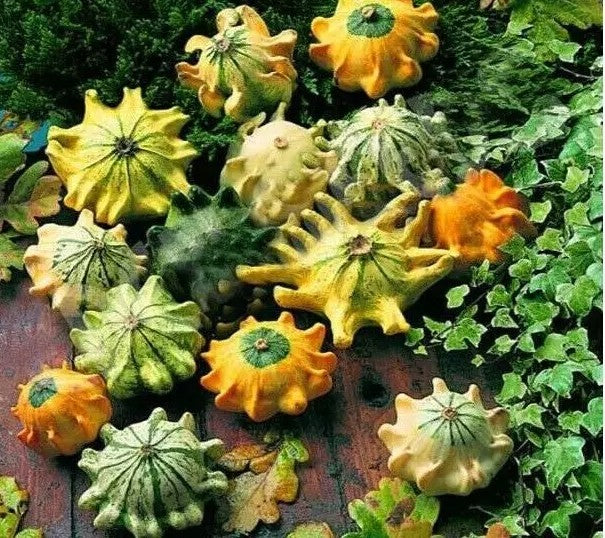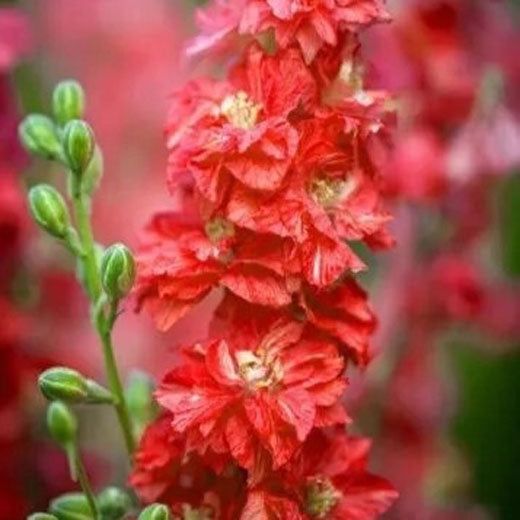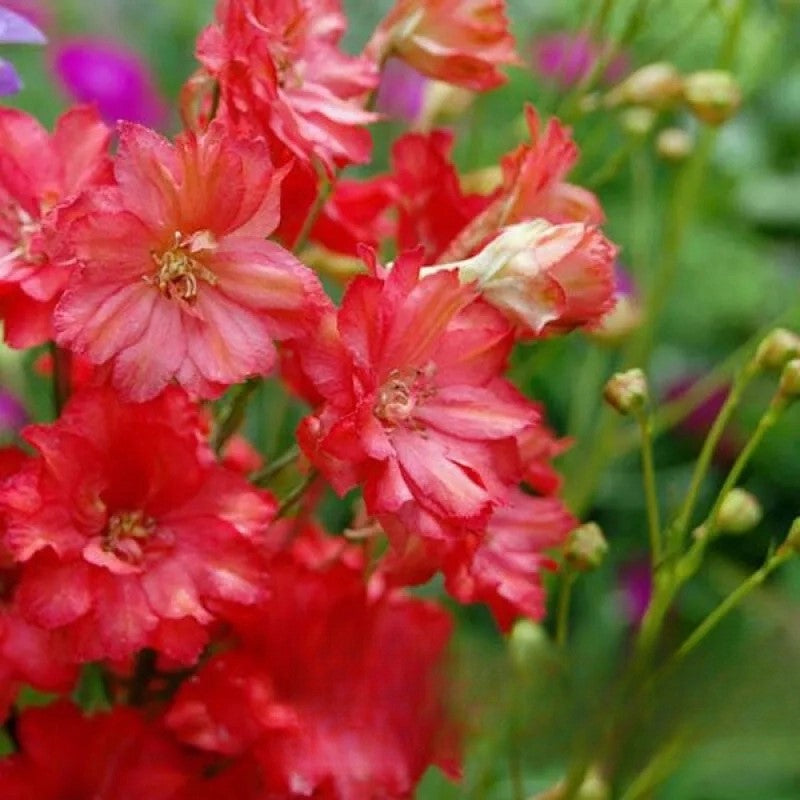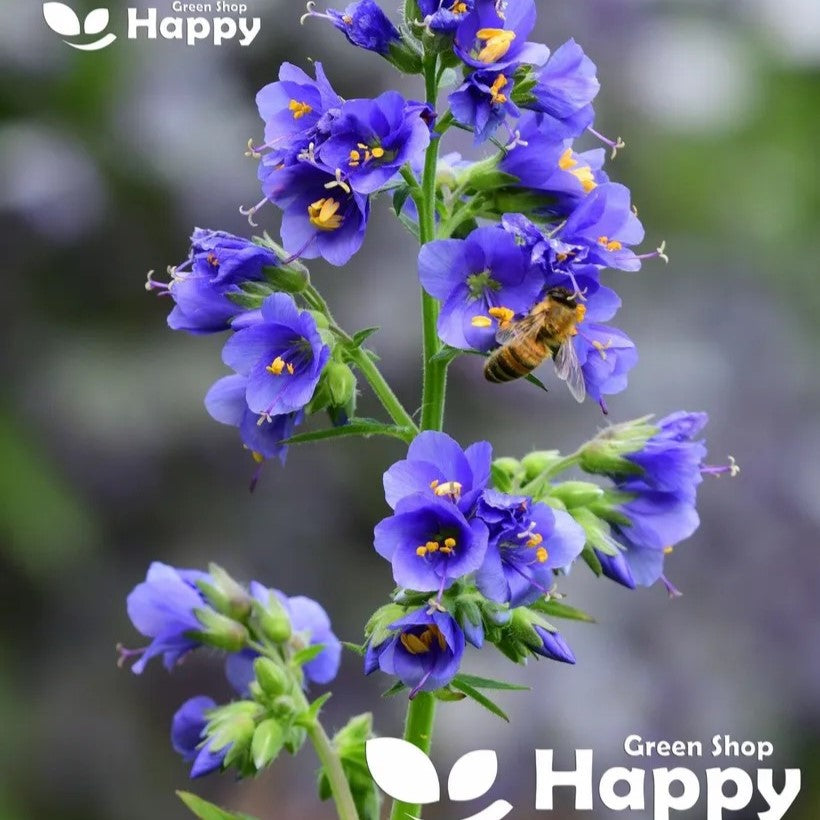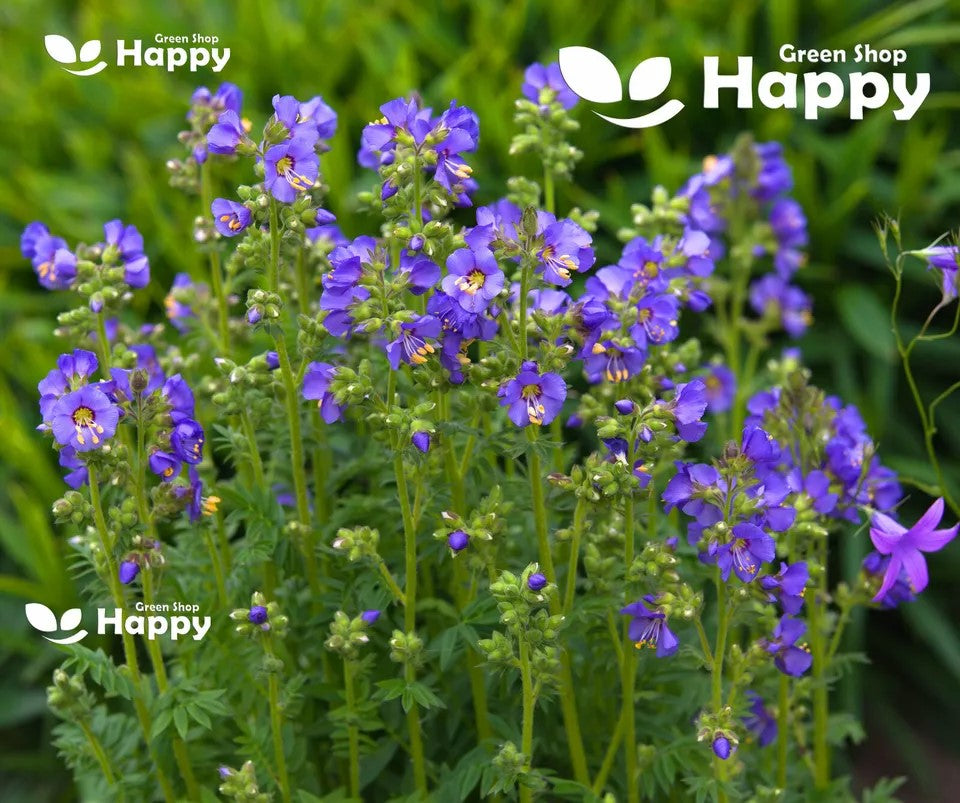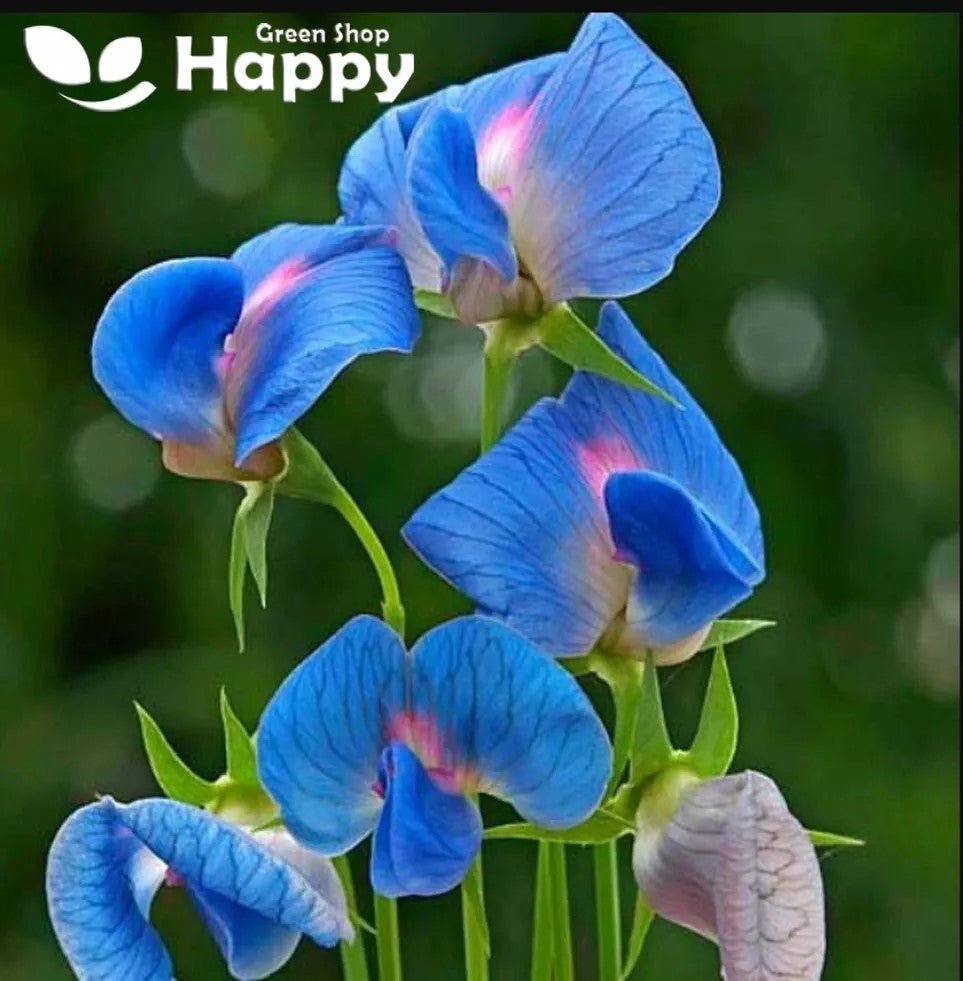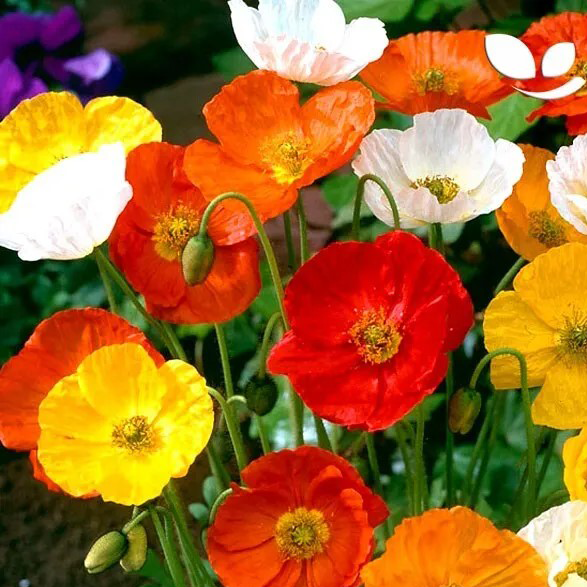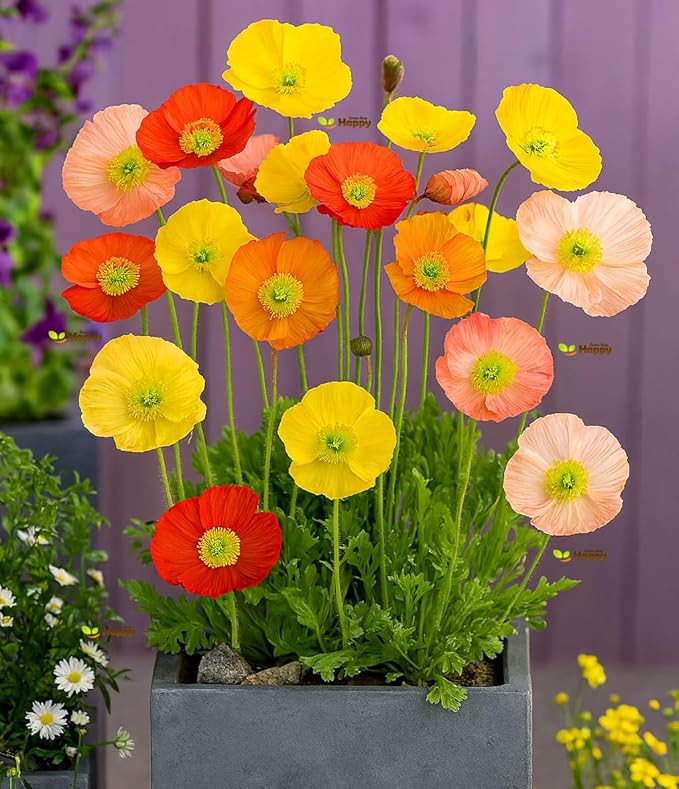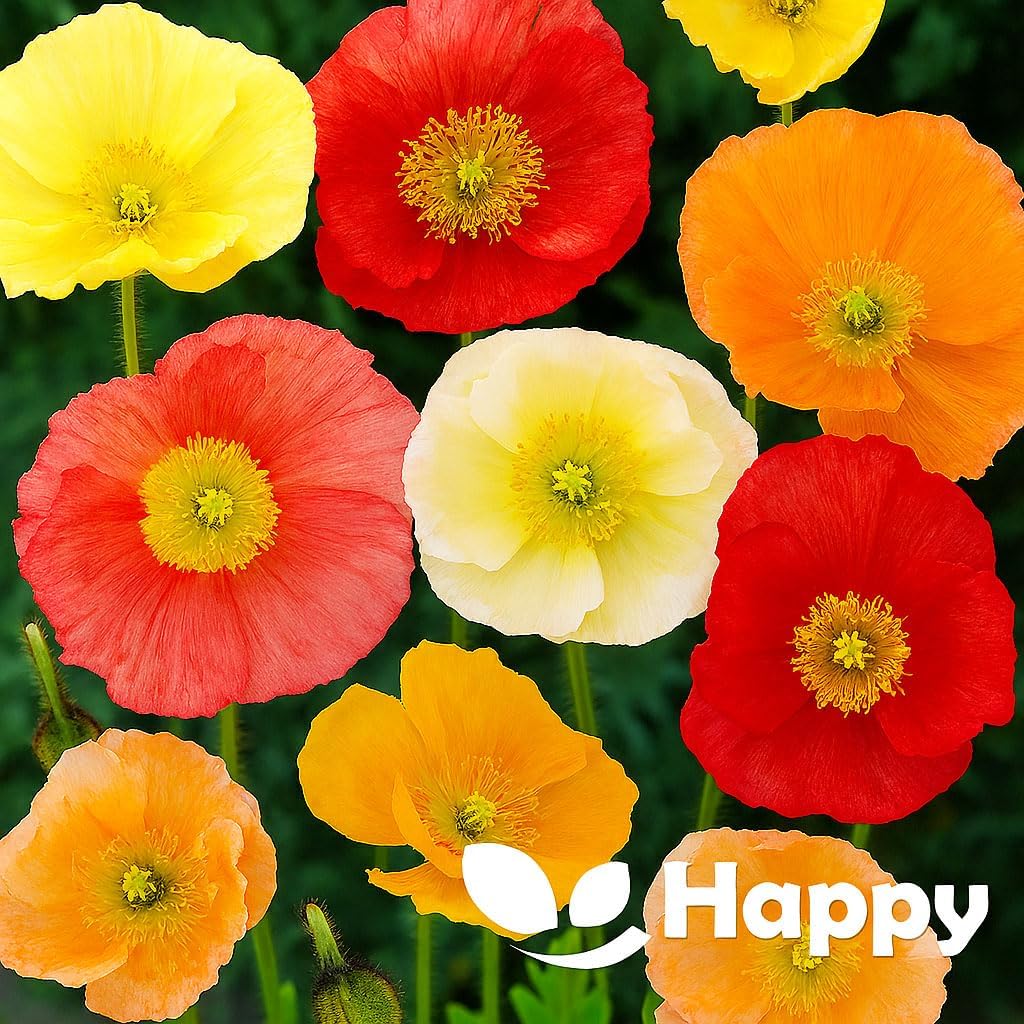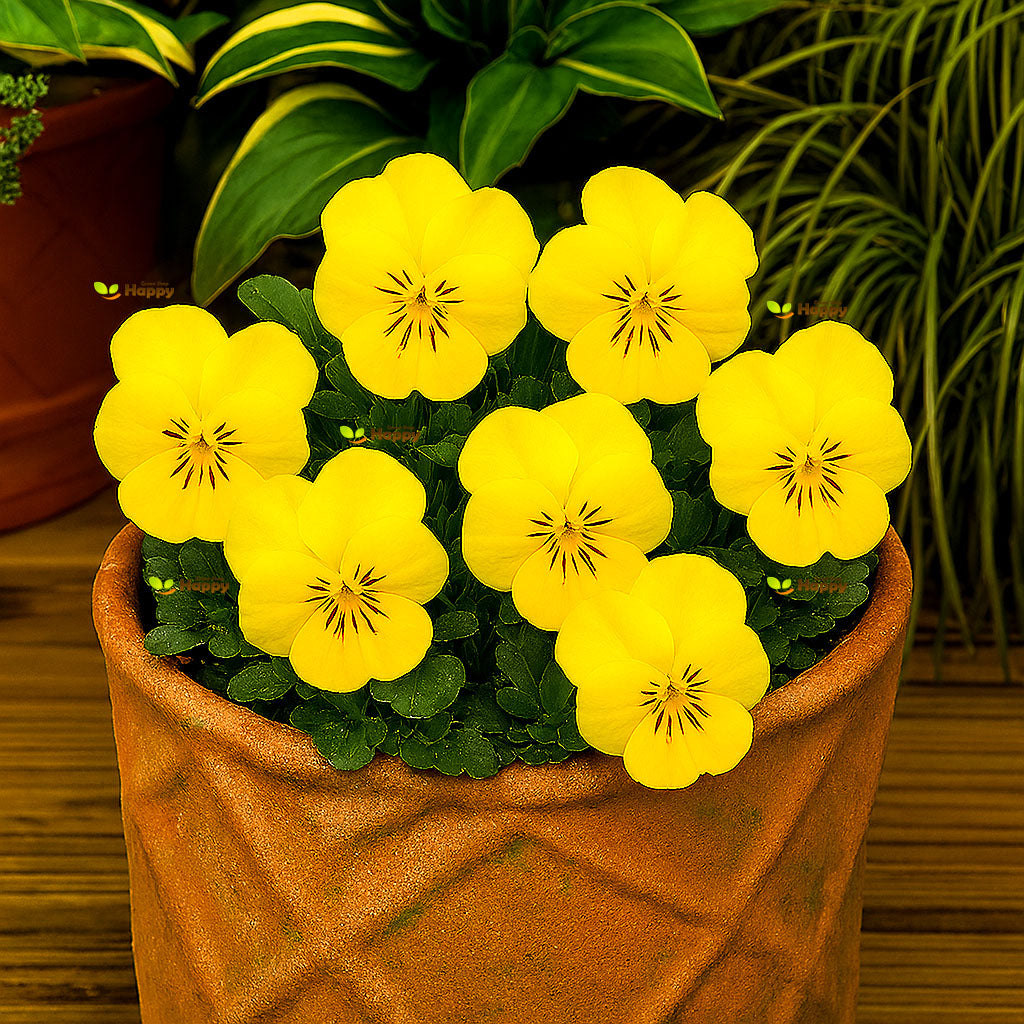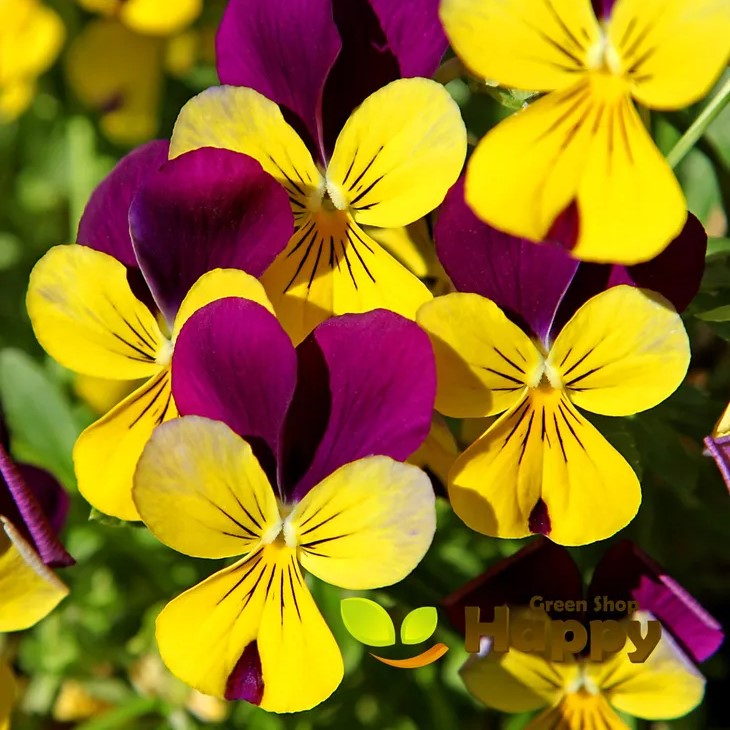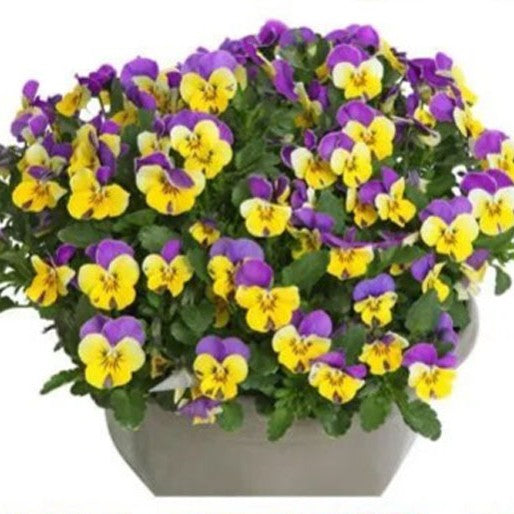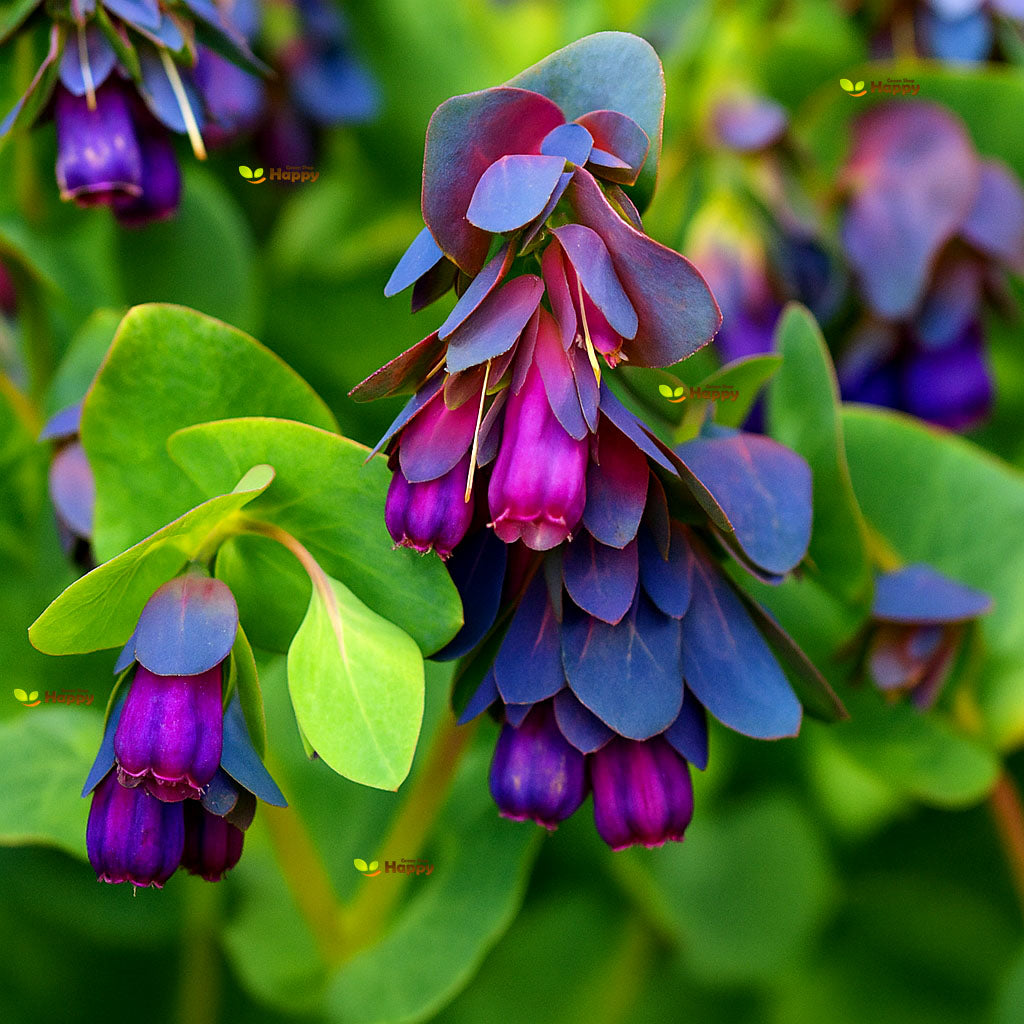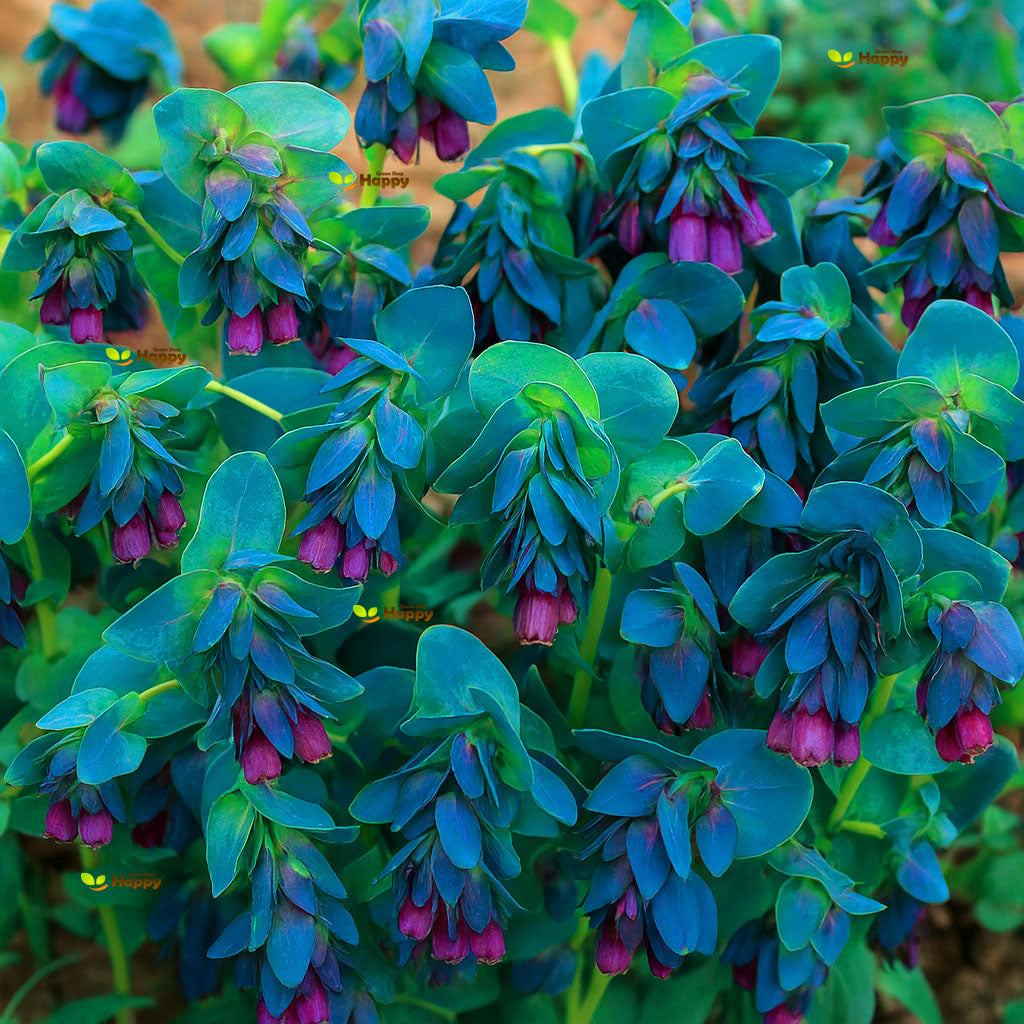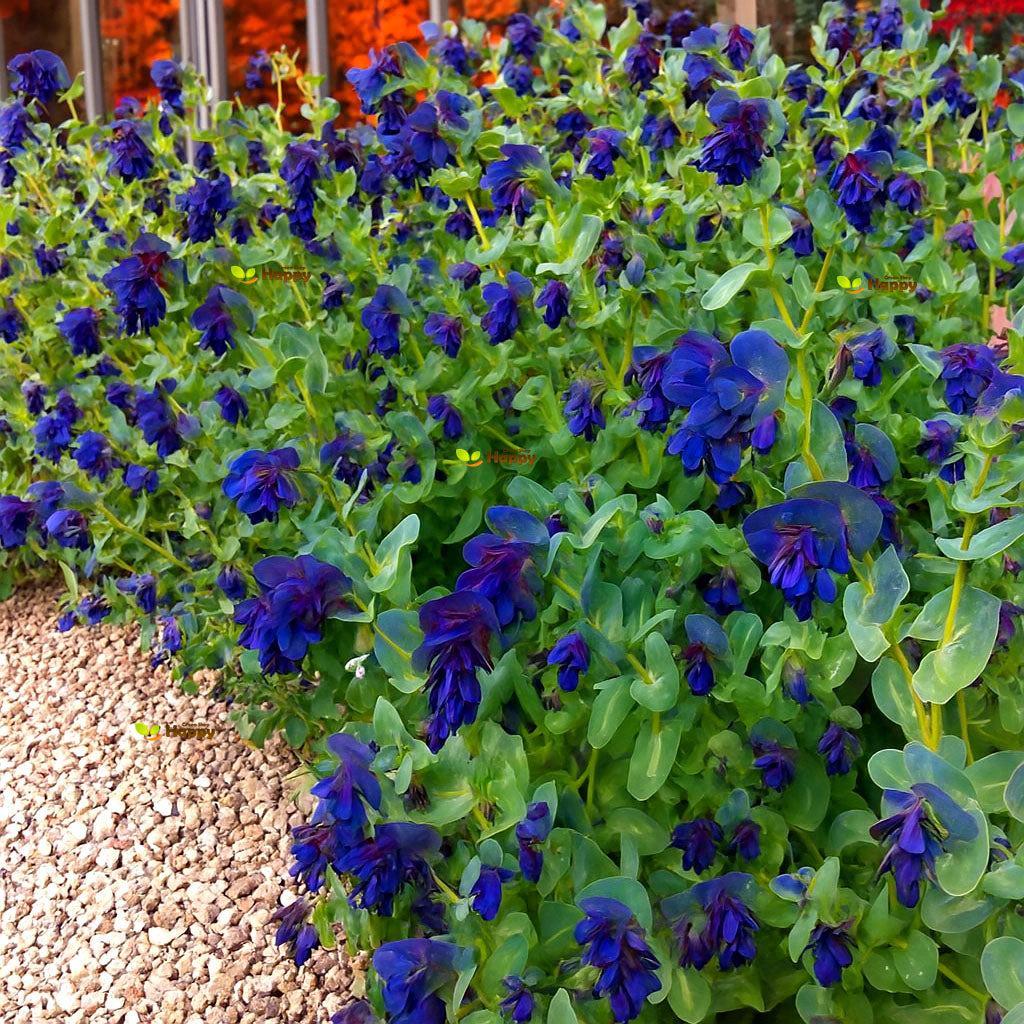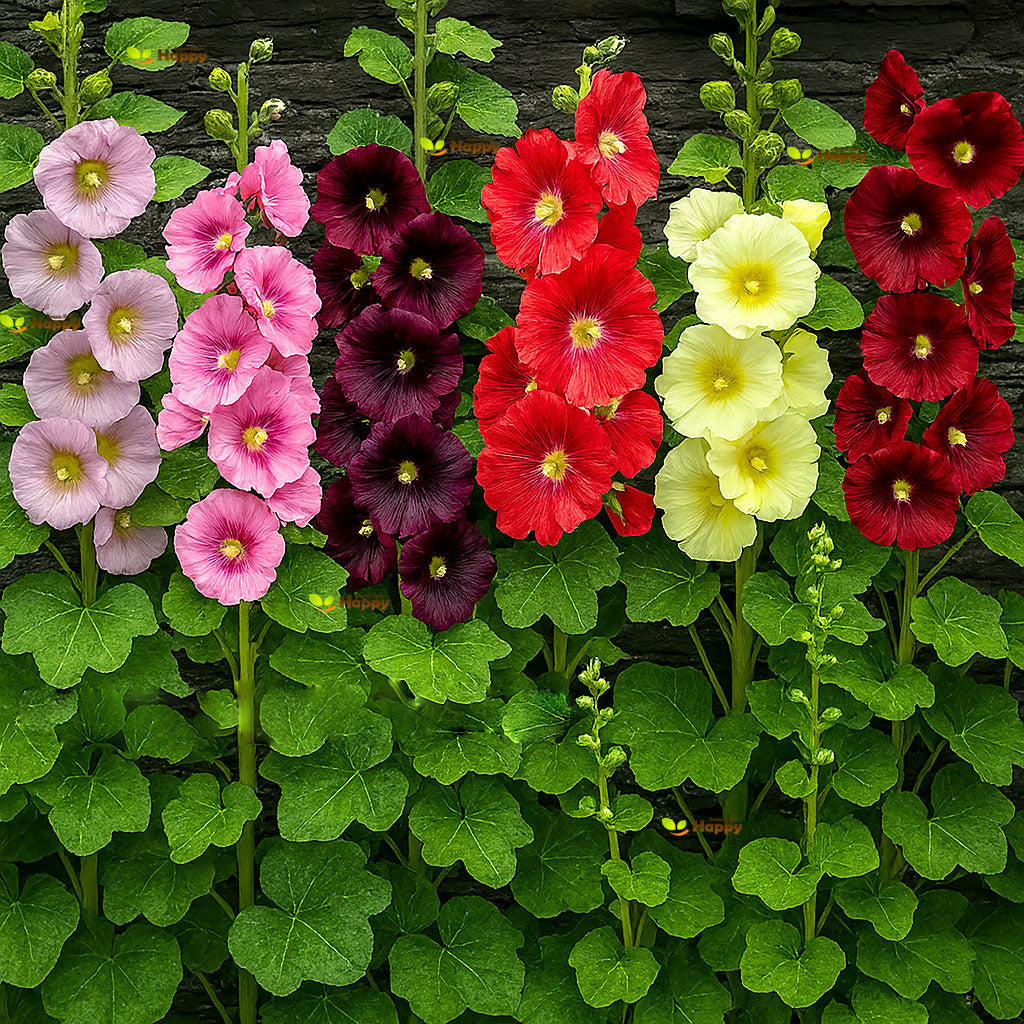Sort by:
351 products
351 products
Larkspur ‘Carmine King’ Mix – Seeds (Delphinium consolida)
Larkspur ‘Carmine King’ Mix (Delphinium consolida) is an annual producing tall spikes of vibrant carmine, pink, and purple flowers from early summer to autumn. Its striking vertical blooms are perfect for borders, cottage gardens, and cut flower arrangements. Easy to grow and low-maintenance, this variety attracts pollinators while adding color, height, and charm to any garden.
Why Grow "Carmine King Mix"
-
Tall spikes of vibrant carmine, pink, and purple flowers
-
Long flowering season from early summer to autumn
-
Ideal for borders, cottage gardens, and cut flowers
-
Attracts bees, butterflies, and other pollinators
Key Features
-
Type: Annual (Delphinium consolida)
-
Height: 60–90 cm
-
Flowering: Early summer to autumn
-
Position: Full sun
-
Uses: Borders, beds, cottage gardens, cut flowers, pollinator gardens
Ideal For
-
Adding vertical color and structure to borders and beds
-
Cottage garden designs
-
Cut flower production
-
Pollinator-friendly gardens
Sowing & Growing
-
Sow indoors: 6–8 weeks before last frost
-
Sow outdoors: After frost danger has passed
-
Germination: 10–14 days
-
Space seedlings: 25–30 cm apart
-
Prefers well-drained soil and full sun
Jacob’s Ladder Seeds (Polemonium caeruleum)
Jacob’s Ladder is a graceful perennial named for its ladder-like leaves and clusters of charming, sky-blue, bell-shaped flowers. Blooming in late spring to early summer, it adds elegance to borders, woodland gardens, and cottage-style plantings. Easy to grow and loved by pollinators, this hardy perennial thrives in partial shade and cool conditions.
What Makes It Special
-
Sky-blue bell-shaped flowers with golden stamens
-
Attractive ladder-like foliage
-
Excellent for shaded borders and pollinator gardens
Key Features
-
Botanical name: Polemonium caeruleum
-
Hardy perennial
-
Height: 60–90 cm
-
Bloom time: Late spring to early summer
Ideal For
-
Woodland and cottage gardens
-
Shaded borders
-
Pollinator-friendly plantings
Sowing
-
Sow indoors Feb–Apr or outdoors Apr–Jun
-
Cover seeds lightly with soil
-
Germination: 21–30 days at 15–20°C
-
Space plants 30–40 cm apart
-
Flowers from the second year onward
Indian Pea ‘Azureus’ – Blue-Pink Flowers – Seeds (Lathyrus sativus)
The Indian Pea ‘Azureus’ (Lathyrus sativus) is a striking and unusual climbing annual, producing delicate blue to pink pea-like blossoms above fine green foliage. Fast-growing and drought-tolerant, it thrives in poor soils and adds a natural, airy charm to borders, trellises, and wild gardens. A hardy species, it has long been valued for its ornamental and agricultural qualities.
Why Grow Indian Pea ‘Azureus’?
-
Unusual pea-like flowers in blue and pink shades
-
Climbing habit perfect for trellises and supports
-
Hardy, drought-tolerant, and easy to grow
-
Adds a natural wildflower look to gardens
Key Features
-
Type: Hardy annual
-
Height: 100–150 cm
-
Spread: 30–40 cm
-
Flowering: June–August
-
Position: Full sun
-
Soil: Poor to moderately fertile, well-drained
Ideal For
-
Trellises, arches, and fences
-
Cottage and wild gardens
-
Pollinator-friendly plantings
-
Drought-prone or low-maintenance sites
Sowing & Growing
-
Sow outdoors: March–May directly in soil
-
Germination: 10–20 days at 15–20°C
-
Thin seedlings: 20–30 cm apart
-
Provide support for climbing stems
-
Water regularly in dry spells
Tip: Pair with other climbing annuals for a colorful vertical display.
Iceland Poppy ‘Artists Glory’ Mix Seeds (Papaver nudicaule)
Bring a painterly touch to your garden with Iceland Poppy ‘Artists Glory’ Mix. This charming annual produces delicate, papery blooms in a vibrant mix of reds, pinks, oranges, yellows, and whites, creating a stunning spring-to-summer display. Its soft, nodding flowers add elegance to borders, rock gardens, and cottage-style plantings.
Why Grow ‘Artists Glory’ Mix
-
Stunning mix of bright, papery blooms
-
Hardy, easy-to-grow annual
-
Perfect for borders, rock gardens, and cut flowers
Key Features
-
Botanical name: Papaver nudicaule
-
Type: Hardy annual
-
Height: 30–45 cm
-
Spread: 20–25 cm
-
Flowering: Late spring–summer
-
Position: Full sun
-
Uses: Borders, rock gardens, cut flowers, cottage gardens
Sowing & Growing
-
Sow indoors: February–March in trays, lightly cover seeds
-
Germination: 10–20 days at 15–18°C
-
Transplant seedlings outdoors after frost, spacing 20–25 cm apart
-
Prefers full sun and well-drained soil
-
Deadhead spent flowers to prolong blooming
Iceland Poppy ‘F2 Wind Song’ Mix Seeds (Papaver nudicaule)
A delicate and charming mix, Iceland Poppy ‘F2 Wind Song’ produces vibrant, papery blooms in shades of pink, orange, yellow, and white. Hardy and long-flowering, these poppies are perfect for borders, rock gardens, and wildflower-style plantings, bringing cheerful color from late spring into summer.
What Makes It Special
-
Soft, papery flowers in a mix of pastel and bright shades
-
Hardy, compact plants that thrive in cooler climates
-
Attracts bees and pollinators, enhancing wildlife-friendly gardens
Key Features
-
Botanical name: Papaver nudicaule
-
Hardy perennial (often grown as an annual)
-
Height: 30–45 cm (12–18 in)
-
Bloom time: Late spring to early summer
Ideal For
-
Borders, beds, and rock gardens
-
Wildflower and cottage-style plantings
-
Containers and pots for bright seasonal color
Sowing
-
Sow indoors Feb–Apr or outdoors Mar–May
-
Scatter seeds on the surface of well-drained soil; do not cover
-
Germination: 14–28 days at 15–20°C
-
Thin seedlings to 20–30 cm apart
-
Flowers the same year when sown in spring
Horned Pansy 'Prince John' Seeds (Viola cornuta)
The Horned Pansy 'Prince John' is a delightful heirloom variety of Viola cornuta, loved for its charming golden-yellow blooms with subtle shading. Compact and long-flowering, it’s ideal for brightening up borders, containers, and rock gardens with a cheerful splash of sunshine. Hardy and easy to grow, it also attracts pollinators to the garden.
What Makes It Special
-
Distinctive golden-yellow flowers
-
Hardy perennial (often grown as a biennial)
-
Perfect for naturalizing or cottage-style gardens
Key Features
-
Botanical name: Viola cornuta
-
Perennial (treated as biennial in some climates)
-
Height: 15–20 cm
-
Spread: 20–25 cm
-
Flowering: May–September
Ideal For
-
Cottage gardens and naturalized plantings
-
Borders, pots, and rockeries
-
Long-lasting displays from spring to autumn
Sowing
-
Sow indoors: February–April, cover lightly with compost
-
Germination: 10–21 days at 15–20°C
-
Transplant outdoors: after last frost, 20 cm apart
-
Prefers sun to partial shade and moist, well-drained soil
Horned Pansy 'John Jump Up' (Helen Mount) Seeds (Viola cornuta)
Bring charm and cheer to your garden with the classic Horned Pansy 'John Jump Up', also known as Helen Mount. This historic variety produces petite blooms with vibrant deep violet-purple petals, bright yellow centers, and soft lilac highlights. Perfect for naturalizing, borders, or cottage-style gardens, these hardy perennials bloom freely and reliably.
What Makes It Special
-
Distinctive tri-colored flowers with cheerful faces
-
Hardy, long-flowering perennial
-
Great for borders, containers, and ground cover
Key Features
-
Botanical name: Viola cornuta
-
Perennial (often grown as a biennial)
-
Height: 15–20 cm
-
Spread: 20–25 cm
-
Flowering: May–September
Ideal For
-
Borders, rock gardens, and cottage-style plantings
-
Naturalizing and long-lasting displays
-
Pollinator-friendly gardens
Sowing
-
Sow indoors: February–April, cover lightly with compost
-
Germination: 10–21 days at 15–20°C
-
Transplant outdoors: after last frost, 20 cm apart
-
Prefers sun to partial shade and moist, well-drained soil
Honeywort – Seeds (Cerinthe major)
Honeywort (Cerinthe major) is an eye-catching annual with striking blue-purple tubular flowers and silvery-green foliage. Loved by bees and other pollinators, it adds unique texture and color to borders, cottage gardens, and wildflower mixes. Fast-growing and low-maintenance, it thrives in sunny, well-drained spots.
Why Grow "Honeywort"
-
Striking blue-purple tubular flowers
-
Silvery-green, ornamental foliage
-
Attracts pollinators including bees and butterflies
-
Easy to grow and low-maintenance
Key Features
-
Type: Hardy annual (Cerinthe major)
-
Height: 40–60 cm
-
Flowering: June–September
-
Position: Full sun, well-drained soil
-
Uses: Borders, cottage gardens, wildflower mixes, pollinator gardens
Ideal For
-
Pollinator-friendly gardens
-
Cottage and naturalistic borders
-
Adding height and color contrast
-
Wildflower plantings
Sowing & Growing
-
Sow outdoors: March–May in prepared soil
-
Germination: 10–20 days at 18–22°C
-
Thin seedlings to 25 cm apart
-
Prefers full sun and well-drained soil
-
Deadhead to encourage prolonged flowering
Hollyhock Single Mix – Seeds
(Alcea ficifolia)
Hollyhock ‘Single Mix’ is a robust and reliable perennial, producing tall spires adorned with single, open-faced blooms in a wide range of classic cottage garden colors. Hardy and vigorous, these hollyhocks thrive in borders, along walls, and in naturalistic plantings, adding striking vertical height and charm year after year.
Why Grow Hollyhock Single Mix?
-
Tall flower spikes with a rainbow of single blooms
-
Hardy, vigorous, and long-lived perennial
-
Perfect for adding height to borders and backdrops
-
Traditional cottage garden favorite
Key Features
-
Type: Hardy perennial (sometimes grown as biennial)
-
Height: 150–200 cm
-
Flowers: Summer (second year onward)
-
Position: Full sun
-
Soil: Fertile, well-drained
Ideal For
-
Cottage and traditional gardens
-
Background planting in borders
-
Pollinator-friendly spaces
-
Adding vertical accents to garden designs
Sowing & Growing
-
Sow indoors: March–May in trays or pots at 15–20°C
-
Sow outdoors: May–July directly into prepared soil
-
Germination: 14–21 days
-
Transplant: Grow on and plant in final positions in autumn
-
Care: Provide support for tall stems and remove faded flowers to extend blooming
Showing 189/351



